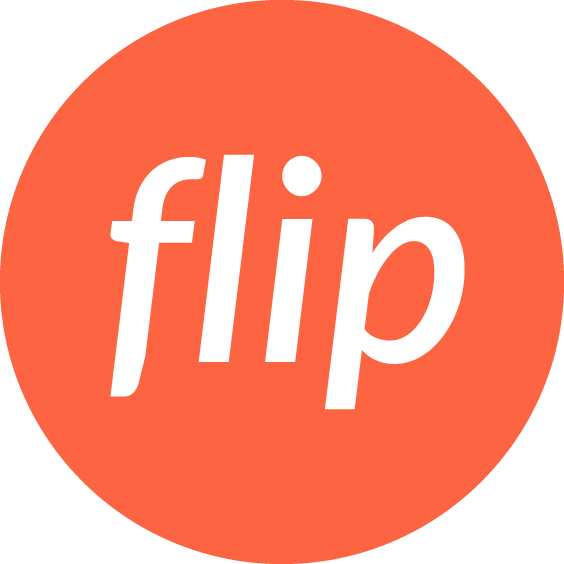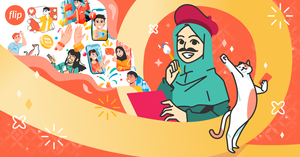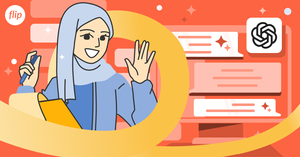When we think of a Digital Product Designer (or UX Designer) the first image that usually comes to mind is someone behind a screen, crafting pixel-perfect designs. But the role is so much more than designing interfaces. A huge part of creating successful products is understanding the people who use them; their experiences, needs, and challenges.
For us product designers, there’s no better way to build empathy than by talking directly to users, listening to their stories, and observing their real-life interactions with our products. For this research, we use the ethnographic research method. These experiences shape insights that fuel future improvements.
Last year, Vishal Shah(a former Product Manager) and I went on a user research mission. Our goal? Dive deep into real user experiences and gather insights that could give insight into our product journey. I collaborated with our UX Researcher to conduct this interview, who helped shape our research plan and prepared the initial interview guidelines. Although our visit was on a tight timeline, we were set with our questions and eager to meet the users in person.

The Interviews: What We Learned
Our first interview was with a small business owner who specializes in selling digital products, or what we call a reseller. I was amazed by his entrepreneurial spirit and resiliency in everything he did. Alongside reselling digital products, he ventured into logistics services, cat food sales, and logistic services, all while managing these different streams on his own. Meeting someone with such drive and resilience was inspiring and offered a window into the kind of challenges multi-role entrepreneurs face.
He shared the challenges he encountered in expanding his business, particularly around securing funds to support his growth. From this conversation, I got one key insight: the potential need for a Paylater option specified for business owners, providing them the flexibility to manage cash flow while scaling their business. Additionally, he expressed a strong preference for a web-based platform, one that would save him time and eliminate the need to constantly switch between devices. This feedback emphasized the importance of offering flexible tools for busy users who need simplicity and efficiency.

In another interview, we met a user who regularly processes transactions on behalf of others. He highlighted the need for a “bulk payment” feature, which could simplify paying multiple bills at once. Teachers, for instance, often pay school fees for several students at once, and a bulk payment feature would streamline the process. Another specific request? A feature to print receipts directly from the Flip app, currently, he relies on an alternative platform for this. We listened closely and later prioritized this feature to support our reseller community, knowing it would make a meaningful difference for them.
Insights You Can Only Get From Offline Interviews
Face-to-face interviews gave us access to insights that just don’t come through in online surveys or online calls. Meeting users in person, they share more openly like telling stories, discussing challenges, and celebrating wins that bring their experiences to life. This in-the-moment connection helped us catch details that often slip by online: body language, spontaneous ideas, and honest, unfiltered feedback.
These interactions led to discoveries we hadn’t anticipated, like a strong preference for web-based platforms, the need for bulk payment features, and even a request for an in-app print receipt feature. These kinds of insights only surface when you’re there, face-to-face, truly listening and observing.
Each conversation reminded us of the real-world impact of our designs and clarified our role as designers: bridging the gap between user needs, technology, and business goals.
Challenges in Offline Visit Research
While our offline interviews provided valuable insights, we encountered certain challenges during the process. One of the main difficulties was engaging users in meaningful discussions to uncover deeper insights.
Given that our users have all sorts of backgrounds, they really differ in how they communicate and how comfortable they feel sharing info. Like, in one interview, we noticed the second person wasn’t nearly as open as the first one. Even though we tried our best with open-ended questions, the chat didn’t really give us the detailed insights we were looking for.

This experience underscored the importance of tailoring our approach to suit different personalities and levels of engagement. Moving forward, we’re exploring ways to make participants feel more at ease and motivated to share their thoughts—whether through adjusted question framing, icebreakers, or creating a more relaxed environment during interviews.
Final Thought: Step Into Users' Shoes
To truly understand users, it’s not enough to imagine their experiences—we need to step into their world. This means going beyond data points and usage metrics to connect with them on a human level. When we spend time listening to their stories, observing their interactions, and asking the right questions, we gain insights that can’t be replicated in any other way.
Every conversation reminds us that our designs serve real people with unique needs, preferences, and challenges. Seeing how users navigate their lives and work sheds light on how our products fit—or don’t fit—into their routines. It’s in these moments that we uncover the subtle obstacles they face and recognize the solutions that would make a meaningful difference for them.
Offline visits also build trust and rapport that go beyond what digital interactions allow. Users feel seen, heard, and valued, knowing their experiences directly shape the products they use. As designers, these moments strengthen our commitment to building with empathy and purpose. Each offline visit becomes a learning experience, refining our perspective on how to bridge user needs, technology, and business goals.
In the end, true user-centered design is less about assumptions and more about engagement. By stepping out from behind the screen and into users’ lives, we create products that are not only functional but truly resonate with the people who rely on them every day.
The Role of Designers in Research: A Commitment to “Customer Love”
At Flip, we believe that truly understanding our users begins with active involvement in their world. One of the ways we embody this is by ensuring our designers are directly engaged in the research process, not just as observers but as active participants.
In many organizations, designers might rely solely on insights handed over by researchers, missing the firsthand nuances of user interactions. At Flip, however, our designers go the extra mile—joining interviews, discussing and analyzing findings, and even brainstorming solutions based on real user insights.
By taking part in these offline visits, designers gain a deeper empathy for our users, translating into designs that genuinely reflect user needs. This approach ties directly into our “Customer Love” value, demonstrating our dedication to putting users at the heart of everything we create.
Involving designers at this level isn’t just about enhancing their understanding; it’s about fostering collaboration that leads to impactful, user-centered solutions. Through active participation in research, Flip designers ensure our products aren’t just functional but meaningful and delightful for our diverse audience.
—
Hope you enjoyed the lessons learned and solution as well it will inspire you to craft your unique style.
We're a group of passionate individuals who thrive on collaboration and pushing boundaries.










